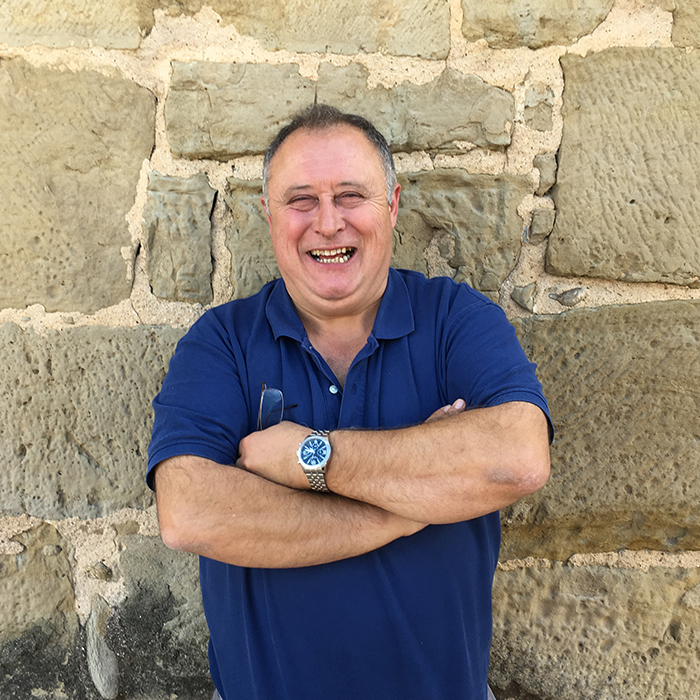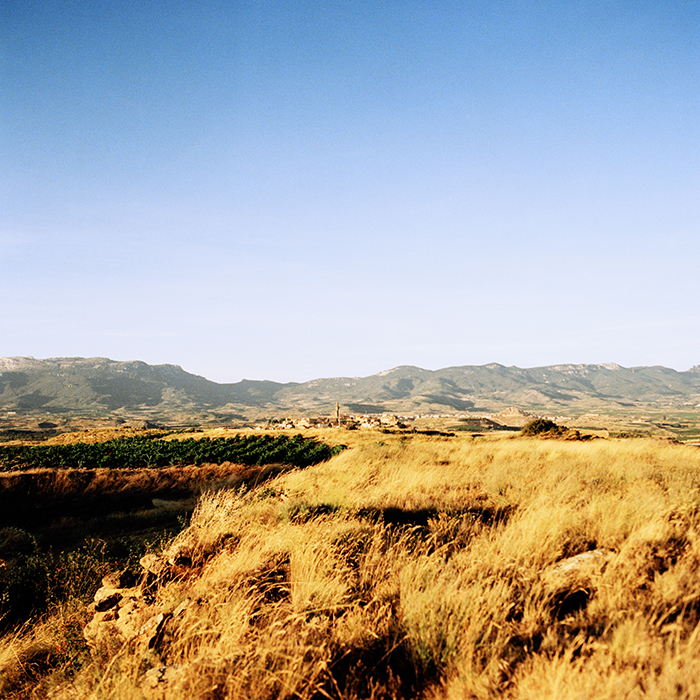Talking terroir with Finca Allende
Author: Catriona Felstead MW

Miguel Ángel de Gregorio
The 2015 vintage sees the realisation of a project that has been in Miguel Ángel de Gregorio’s mind for 20 years, with the release of two new wines in the Finca Allende portfolio: Gaminde and Mingortiz. These wines are not only a personal triumph for Miguel Ángel but they also offer a fascinating insight into different expressions of Rioja, one based on vineyard, not length of ageing in the cellar. In November, Catriona Felstead MW met up with Miguel Ángel de Gregorio to talk about the project.
Catriona Felstead MW (CF): Tell me, Miguel Ángel, about how you started here in Briones. You were a teacher in the university… what brought you here?
Miguel Ángel de Gregorio (MA): I was commissioned by the university and the Ministry of Culture to look into the possibility of mechanically harvesting grapes in Spain. At this time there were only three machines for harvesting in Spain, when there were 9,000 in France. It wasn’t very developed.
I arrived in Briones in 1986 at harvest time and I found that the terroir was incredible. Incredible. For me, what makes Briones special is evident in the colour of its wines; they are not purple, they are black. That is very unusual.
I left the university in 1999 and came to Rioja to work in a cellar to start my obsession with Briones. I bought practically 30 percent of the grapes of the village for this cellar. I gained a lot of experience over eight years and found out which were the different parcels of the village. In 1995, I bought my first vineyards and started Finca Allende with just nine hectares of old vines. Today we have 74.
CF: How did you feel when you left the university?
MA: Much happier. I left my tie behind at the university. While I was there, I made a lot of papers but I didn’t make wine.
CF: And what is it specifically about the terroir of Briones that makes this special, black wine?
MA: The terroir here is unique with a lot of red clay and gravel. My first experience of this was in 1986 when I went to a lot of the old farmers of the village and tasted their wines, wines made with carbonic maceration, not aged in barrel, and 20 years later they were still black and not evolved at all. This was to do with the unique quality of the tannins and the high acidity of the village.
CF: So when did your fascination with terroir start?
MA: First of all, what is the idea of terroir? In Bordeaux, it is to do with the cellar and the property. This is how I started. But then I realised the possibility of looking for more small terroirs, more single plots, more precise, more expressive wines. Changing, evolving the concept of terroir. My top cuvée, Aurus, began as a special cuvée of Allende, not a single-vineyard wine. At first it was more Bordelais than Burgundian in its concept, but it became a single terroir wine.

Finca Allende. Photograph: Jason Lowe
CF: What is your opinion of new Viñedos Singulares (single vineyard) classification?
MA: The problem is that I created the name Viñedos Singulares and then the Consejo Regulador copied it. For 25 years, the governors of the Consejo have forbidden single-vineyard and village wines. Today they have decided to make a law to control this and it could destroy it; it is the same law for a property of 300 hectares as a property of one hectare. I will not put it on my wine.
CF: And if the Consejo moved instead to a system to make a village appellation for Briones, would you be in favour?
MA: Yes, absolutely. This is the idea of Allende.
CF: So, moving to Gaminde and Mingortiz, your two new babies that are now toddling, when did you have the idea for these two new wines?
MA: In 1996/97. My vision was that Gaminde would be a wine for keeping, while Mingortiz would be an explosion of fruit, and it is. But I didn’t decide myself on the character of each of these wines, it is decided by the terroir. My only decision was, on what day should I harvest?
CF: Can you explain what the names mean?
MA: Let me ask you, what does “Clos de Vougeot” mean? I don’t know. They are the names of the vineyards. Mingortiz is round, expressive, fruity. Gaminde is more complex, it has more acidity, it is more for keeping. And the colour is black. Every time, Allende is black.
CF: These are both 100 percent Tempranillo wines. Do you think for the terroir to show most clearly, a wine needs to be made from one variety?
MA: No, I think the blend or variety is part of the terroir. And I don’t think a terroir needs to be understood every year. It is the same in music: Beethoven’s 9th Symphony is marvellous, amazing; it is not necessary to rewrite it every year, it is always here. But every Director of every orchestra makes a different interpretation of the 9th Symphony. However, the 9th Symphony is the 9th Symphony every time. If you want to express terroir, you don’t need to intervene, you just have to accompany it along the road.
2015 Mingortiz: Suave, supple and beautifully poised, this is very fresh but very fine with enticing, open, generous fruit. The limestone soil shines through in this very pure, linear expression of Rioja. This is a focused wine but one which is already very appealing with mouthcoating notes of raspberries and strawberries, all offset by a long, refreshing finish. Drink 2019-2025. – Catriona Felstead MW, Spain Buyer, October 2017
2015 Gaminde: Fresh, very pure fruit dominates this wine, with an attack of almost strawberry coulis notes, broadening out into darker cherries and bramble fruit. The richer, red soils here give a gorgeous succulence to the wine, with a top note of sweet cranberries yet a fine backbone and poise. This is a really beautiful wine. Drink 2020-2028. – Catriona Felstead MW, Spain Buyer, October 2017
Find out more about Allende on bbr.com


